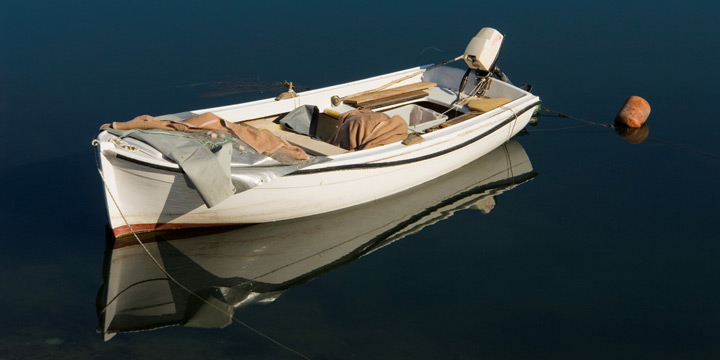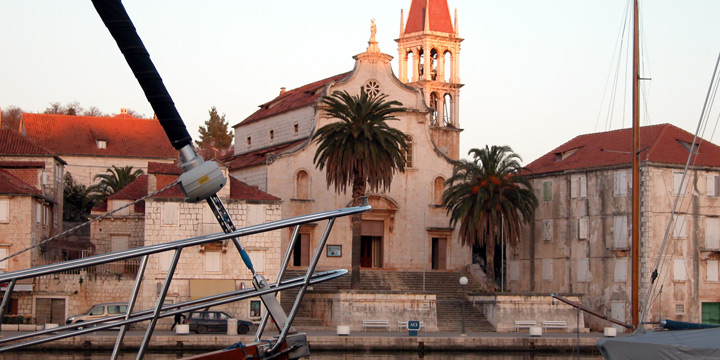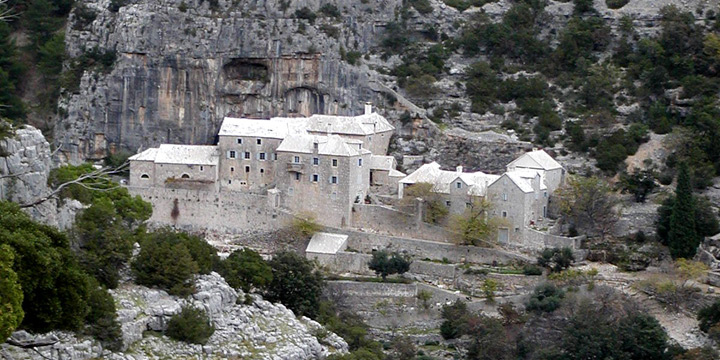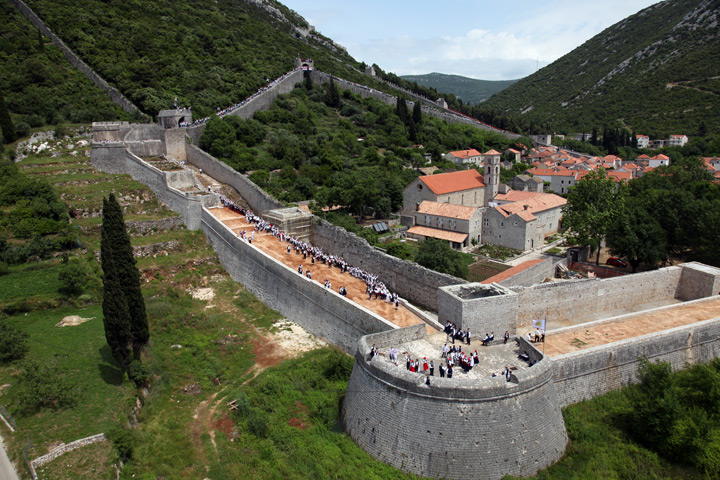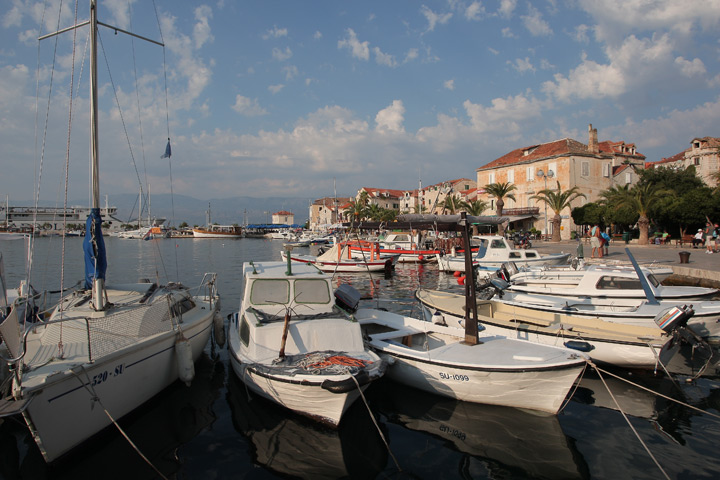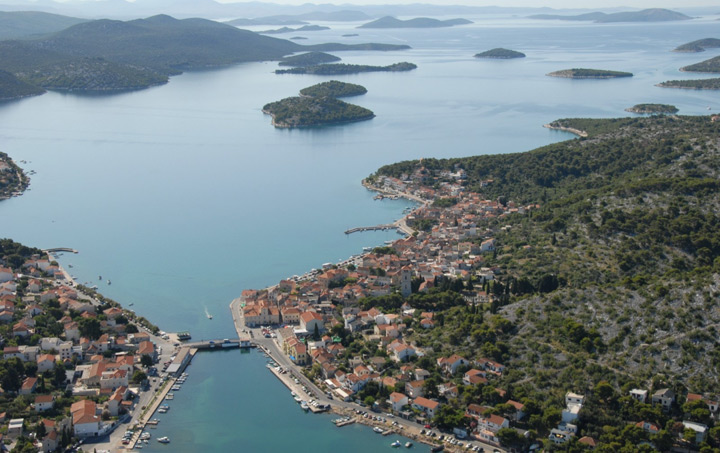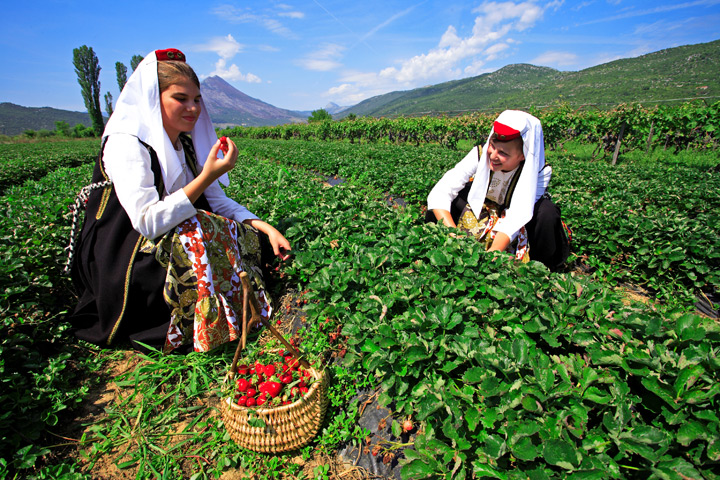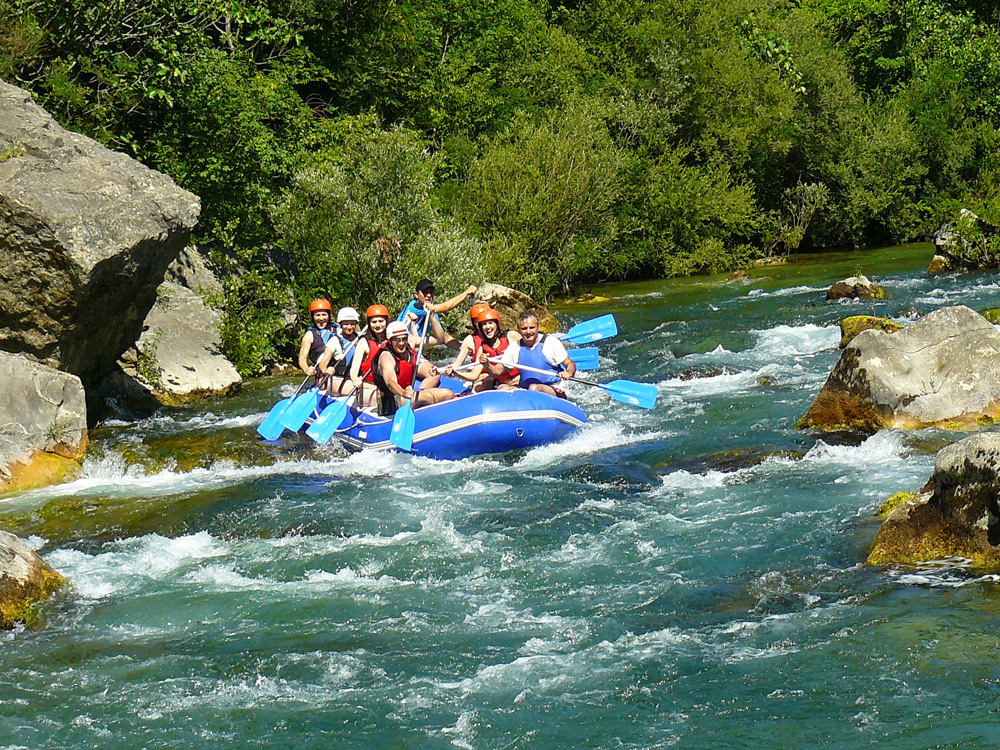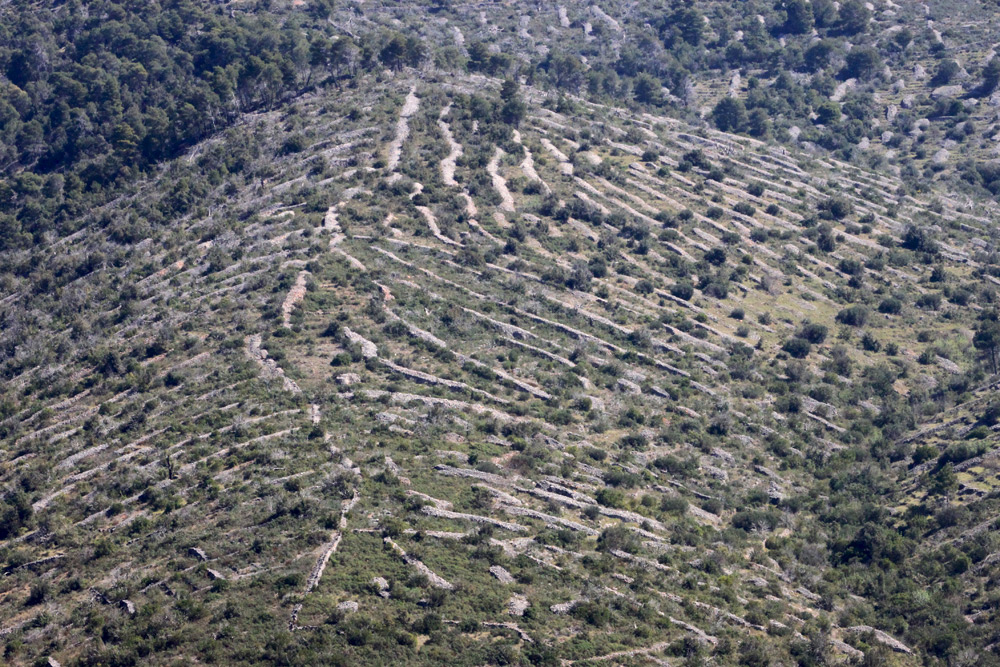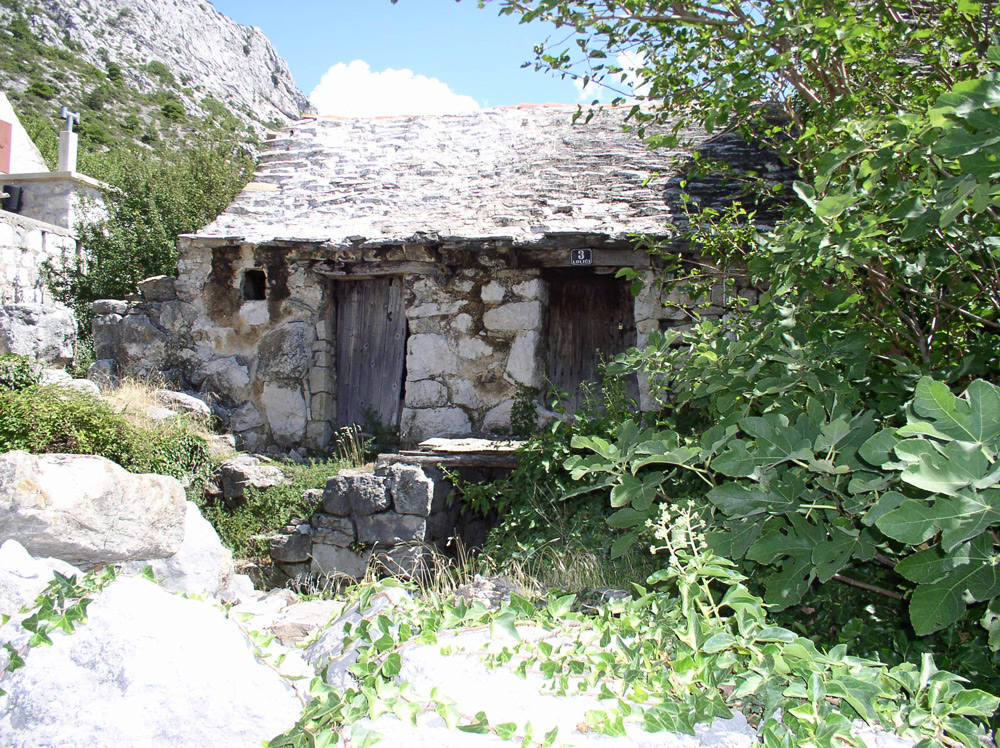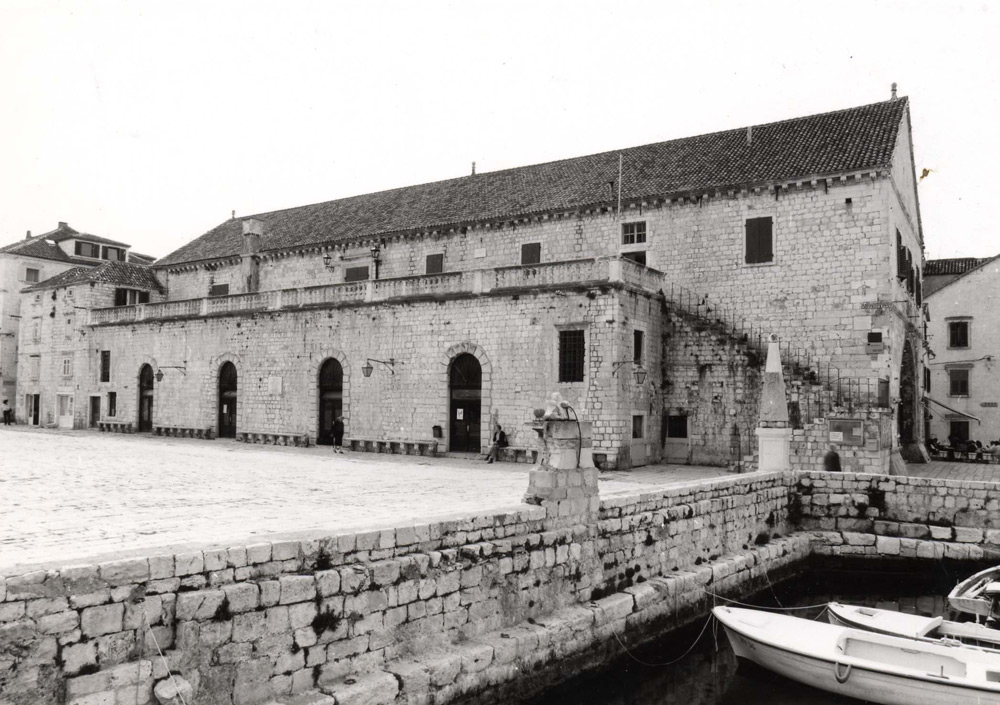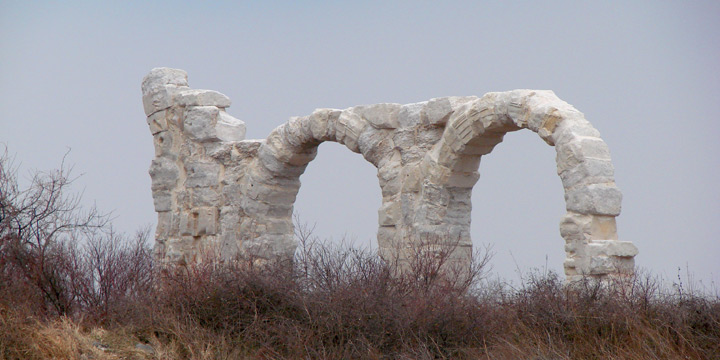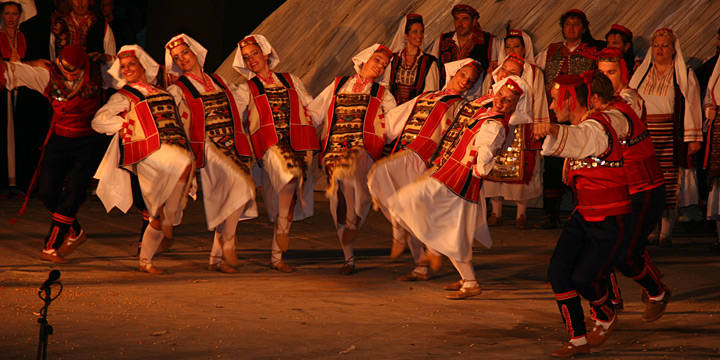Metković – wealth at the Neretva delta
[nivo effect="fade" directionNav="button" controlNav="true" width="720px" height="360px"]
[image caption="Čamac na Neretvi"]http://hotspots.net.hr/wp-content/uploads/2012/04/Camac-na-Neretvi.jpg[/image]
[image caption="Jegulja na ražnju"]http://hotspots.net.hr/wp-content/uploads/2012/04/Jegulja-na-raznju.jpg[/image]
[image caption="Duga iznad Metkovića"]http://hotspots.net.hr/wp-content/uploads/2012/04/Metkovic-duga.jpg[/image]
[image caption="Metković iz zraka - autor Boris Kragić"]http://hotspots.net.hr/wp-content/uploads/2012/04/Metkovic-iz-zraka-Boris-Kragic.jpg[/image]
[image caption="Artefakti u zidu kuće"]http://hotspots.net.hr/wp-content/uploads/2012/04/Artefakti-u-zidu-kuce.jpg[/image]
[image caption="Gradsko kulturno središte"]http://hotspots.net.hr/wp-content/uploads/2012/04/Gradsko-kulturno-srediste.jpg[/image]
[image caption="Božićni koncert zbora Sv. Ilije"]http://hotspots.net.hr/wp-content/uploads/2012/04/Bozicni-koncert-zbora-sv.Ilije_.jpg[/image]
[/nivo]
Metković is a city of cultural diversity, of agricultural variety, but always cordial to its visitors.
The emergence of Metković started on the Predolac hill, whose southern slopes ensured a good shelter from wind and a whole-day sun exposure. Over the centuries, the village has developed slowly; becoming a center of agriculture, livestock, hunting and fishing, but it was only during the French administration that the strategic and commercial significance of the city has increased, due to the construction of the so-called Napoleon road. However, the real development of the town starts by building roads and railway lines to Mostar and Sarajevo, and so it equally spreads on the right side of the Neretva River.
The rich history of the Neretva Valley has left behind many monuments - Metković was always a favorite destination of historical treasure enthusiasts. There are remains from pre-antiquity period, then the discovery of a decorative deer figure probably dating from the Iron Age, which is now exhibited in Oxford Museum. In addition to the Greek reliefs, there are visible remains of Roman rule and of early Christian sacral objects. Namely, the remnants of five early Christian basilicas were excavated in Narona, including the basilica under the present church of St. Vid, situated next to a 5th century baptistery. A number of fortresses and tombstones remained from the time of Neretva Principality. The curiosity is that due to frequent wars and vicinity of the border, there are no significant buildings from the Venetian period.
The present the city with over 15,000 inhabitants is the central settlement of the river valley. Geographically located in its very heart, it is traditionally focused on agriculture, but increasingly develops its tourism potentials.
If you decide to visit this remarkable place, don’t miss the Ornithological collection, one of the largest in Europe. Enjoy the story of the curator about all these beautiful birds, which either visited or lived in the valley of the Neretva River, but became extinct due to the drainage of the swamps.
If you time your arrival in August, make sure to visit the traditional boat marathon Maraton lađa, at least as an observer. In focus of event are ancient wooden boats with oars, which were used by Neretvians for centuries, for taming many backwaters and swamps of this mighty river.
Metković is proud of a two-scenes Theater, with 480 indoor seats and 800 seats next to the Neretva River. Make sure to see a festival of folklore “Na Neretvu misečina padne” (Moonlight falls on the Neretva) – its tickets are always in high demand.
Narona
During 1995-1996 excavations in Vid near Metković, sensational discoveries that reverberated all around the world have been found. 16 statues were found, including Augustus displayed as Emperor as the most dominant one. Namely, in the 1st century BC, this settlement becomes a Roman colony (COLONIA IULIA NARONA) - the military, administrative, judicial and cultural center of the area. Wealth grew in such an environment, so it is logical that in Narona population could build luxury buildings or raise lavish imagery.
But unfortunately, we are left only with what was destroyed or eventually covered with soil carried by water from the hill.
Narona Archaeological Museum was built in 2007, above the temple dating from 10 BC in honor of Emperor Augustus. It represents the first museum in situ in Croatia. On the surface of 1000 m2, there are 900 artifacts found in the temple, on the forum in front of it and all over the site of the ancient Narona.
We must not forget hunting and fishing in Metković, which also brought many at the Neretva river delta… and after hunting and eels fishing, you can try preparing these delicacies.
This is a place you should visit to feel the past, to go back in antiquity and enjoy the beauty and the work of the ancient inhabitants along the banks of the Neretva River!
Turistička zajednica grada Metkovića
Stjepana Radića 1
20350 Metković
Tel/fax: 020/681-899
[styled_link link="http://www.neretva.info" variation="slategrey"]www.neretva.info[/styled_link]
Foto: Arhiv TZ grada Metkovića
Milna (en)
[nivo effect="fade" directionNav="button" controlNav="true" width="720px" height="360px"]
[image caption="Milna"]http://hotspots.net.hr/wp-content/uploads/2012/04/Milna_2.jpg[/image]
[image caption="Milna"]http://hotspots.net.hr/wp-content/uploads/2012/04/Milna.jpg[/image]
[image caption="Milna"]http://hotspots.net.hr/wp-content/uploads/2012/04/Milna_3.jpg[/image]
[image caption="Milna"]http://hotspots.net.hr/wp-content/uploads/2012/04/Milna_4.jpg[/image]
[image caption="Ložišća"]http://hotspots.net.hr/wp-content/uploads/2012/04/Lozisca.jpg[/image]
[image caption="Ložišća"]http://hotspots.net.hr/wp-content/uploads/2012/04/Lozisca_1.jpg[/image]
[image caption="Mrdulja"]http://hotspots.net.hr/wp-content/uploads/2012/04/Mrduja.jpg[/image]
[/nivo]
Milna
This is one of the finest baroque villages on the Croatian coast and the best port on Brač. The families from Nerežišće founded this village at the end of the XVI. century. The village developed around the castle of the Cerinić family who built there chapel of St.Mary. Legend tells of an English lord connected with this castle (it's name is "Anglišćina").
The parish church of Our Lady of Annunciation (1783) has a very original facade using the earlier chapel of St.Mary as its sacristy.Of interest are painting of Annunciation by the late baroque Venetian painter Gaspare Diziani.
The village is dominated by typical twostores buildings, owned by Milna shipbuilders and captains in the XVIII. and XIX. century. Their sailing ships travelled throughout the Mediterranean and beyond to far away oceans. Additionally the typical "bracera" boats, used throughout the Adriatic, were built in these shipyards.
The islet of Mrduja is situated in Splitska Vrata, the sea area between Brač and Šolta that looks like a lake. There is a fortified Renaissance-baroque chapel, while the islet is often the subject of jokes between the people of Brač and Šolta.
Bobovišća and Bobovišća n/m (on the sea)
The old village of Bobovišća nested itself on a sunny slope above the sea, with parish church of St.George. The parish office holds valuable baroque laces.
The early Croatian chapel of St. Martin is placed some fifteen minutes walking distance from the village towards Milna. From this location (235 metres above sea level), there is a beautiful view to the islands of Hvar, Šolta and the open sea towards the island of Vis.
Ložišće
The neo-historic bell-tower dominates the small settlements of houses built in the late baroque folk style.This is the masterwork of Ivan Rendić (a sculpture and architect).
The early Romanesque church of Our Lady of Stomorica (from the XII.century) is situated to the south-east of the village,on the road between Ložišća and Mirca. The stone bridge (XIX. century) is on the way to Stomorica.
Two marinas of Milna have a capacity of 300 berths and all the requirements for safe anchoring...
We highly recommand visiting picturesque settlement – eco ethno village of Podhume.
Turistička zajednica Milna
Milna b.b. 21405 Milna, otok Brač
Tel: +385 (0)21 636 233
Fax: +385 (0)21 636 505
[email_link email="[email protected]" variation="slategrey"][email protected][/email_link]
[styled_link link="http://www.milna.hr" variation="slategrey"]www.milna.hr[/styled_link]
Nerežišća - a stone jewel in the heart of Brač
[nivo effect="fade" directionNav="button" controlNav="true" width="720px" height="360px"]
[image caption="Pustinja Blaca"]http://hotspots.net.hr/wp-content/uploads/2012/04/Pustinja-Blaca.jpg[/image]
[image caption="Bračka katedrala"]http://hotspots.net.hr/wp-content/uploads/2012/04/Bracka-katedrala.jpg[/image]
[image caption="Panorama Nerežišća"]http://hotspots.net.hr/wp-content/uploads/2012/04/Panorama-Nerezisca.jpg[/image]
[image caption="Vala Farska"]http://hotspots.net.hr/wp-content/uploads/2012/04/Vela-Farska.jpg[/image]
[image caption="Smrka"]http://hotspots.net.hr/wp-content/uploads/2012/04/Smrka_.jpg[/image]
[/nivo]
In the very heart of the island of Brač, with an area of 90 square kilometers and 25 kilometers of a pristine coastline, lies the Municipality of Nerežišća, fascinating and wondrous blend of natural wealth, true cultural and historical treasures and exceptional development potentials. The review of historical documents reveals that Nerežišća, enthroned in the year 1000. by Venetian doge Peter II. Orseolo, have been an administrative, religious and economic center of the island for more than eight centuries. Today they are inhabited with about one thousand people involved in the industry, livestock and stone masonry, and from three belonging villages - Nerežišća, Donji Humac and Dračevica - none is situated on the coast.
Among many natural beauties this insular municipality is proud of, we must mention the largest shelter of Aleppo pine in the entire Mediterranean region, located on the western slopes of the Vidova mount, from which, thanks to an altitude of 778 meters, all central Dalmatian and the most distant open sea islands, can be seen as on the palm of the hand. Vidova mount, the highest insular mountain peak on the entire Adriatic, is a favourite excursion destination - in addition to marvelous view, it offers autochthonous gastronomic delicacies that are served in an authentic tavern atmosphere and will satisify even the most demanding palate. We also highly recommend a tour of the Blaca desert, a former clerical refugee from the Turkish invasion and now a museum, which due to the centuries-old material and spiritual enhancement, has become a real gemstone of inestimable cultural and historical value.
Of a particular significance are small, pictoresque churches , built in the period from 11th to 18th century, among which the most impressive is the Parish church, called the Cathedral of Brač due to its beautiful baroque facade and sumptuous interior. However, a special curiosity and a real treasure for historians and connoisseurs is the famous Dragon’s Cave, whose carved reliefs, as well as their interpretation, represent a challenge even to the most skilled. Scientists still fail to determine the chronological order of their occurrence, and to explain with certainty the meaning of interesting and mystical reliefs, which apparently unite Slavic myths with early Christian symbols.
Oasis of natural beauty and a bright future
The immense cultural and historical wealth and unspoiled nature, combined with the creative potential of the citizens who truly love their Nerežišća, guarantee a bright future ahead of this insular municipality. In this regard, of a particular relevance is a commited involvement of the municipal major Lovro Kuščević, in arranging valuable investments that in the coming years will make Nerežišća a must-see tourist destination with a wide range of services; and as for local people, a desirable place to live.
Among many ambitious projects, we must emphasize the development of medicine and exclusive tourism, which are to allow the creation of more than a thousand jobs, which would indirectly prevent the population outflow, a social phenomenon which unfortunately affects insular areas with poor living quality. But this is not the case with Nerežišća - as a part of praiseworthy health tourism project, supported by the Swiss investor Verica Trust, about 700 jobs will be opened, including those for highly educated population.
The project involves the construction of four specialized surgery clinics, the internal clinics for women and children with developmental disabilities with the corresponding diagnostic center, whereas at the guests’ disposition, there will be two water fun parks for children, as well as wellness and spa facilities. In addition to slow roadways, the zones will be connected by walkways through the countryside – it was the relaxing landscape, an abundance of herbs and beneficial island's climate, to encourage investors to recognize the enormous potential of this area. It is expected that the project will start operating in three to four years, and will be maintained throughout the year, which would be the first example of year-round tourism on our coast. Mayor Kuščević points out that the realization of this project implies the exceptional attention dedicated to environmental protection - the execution of works is planned in strict compliance with environmental standards.
Another major project is the development of exclusive tourism - the construction of hotel complexes, villas, marina, sports facilities and numerous other attractions - there will be approximately 5000 beds in 35 thousand square meters. A group of Canadian investors, Dalmi Resort International, has been selected to support the realization of this project, which is, thanks to the opening of about 500 new jobs, expected to stimulate the increase and branching of new economic activities. In addition to the expansion and improvement of Nerežišća’s tourist offer, the goal of the project is to retain the population, and even to encourage the return of the emigrants. In this regard, the employment of 150 people in the bussiness zone Balun-Vrpovlje is a remarkable success, and preliminary agreements were concluded with ten more investors. The construction of subsidized housing apartments, which are now home of several local families, is also completed.
Municipality of Nerežišća has all of the preconditions required for the development and evaluation of their plans and projects. Besides offering more quality and varied tourist services, there is a noble intention behind these initiatives – to restore life to our islands. We hope with all our hearts, that Nerežišća will set a positive trend, which will be properly followed by other insular municipalities as well.
Općina Nerežišća
21423 Nerežišća
Tel.: 021 637 059
Tel.: 021 637 186
Tel.: 021 637 300
Fax.: 021 637 058
E-mail: [email_link email="[email protected]" variation="slategrey"][email protected][/email_link]
The hidden treasures of Dalmatia – the walls of Ston
[nivo effect="fade" directionNav="button" controlNav="true" width="720px" height="360px"]
[image caption="Ston"]http://hotspots.net.hr/wp-content/uploads/2012/04/Ston.jpg[/image]
[image caption="Ston"]http://hotspots.net.hr/wp-content/uploads/2012/04/Ston-2.jpg[/image]
[image caption="Panorama Stona"]http://hotspots.net.hr/wp-content/uploads/2012/04/Ston-panorama.jpg[/image]
[image caption="Stonske zidine"]http://hotspots.net.hr/wp-content/uploads/2012/04/Ston-3.jpg[/image]
[/nivo]
With 5.5 kilometers of total length, strengthened by towers and fortresses, the walls of Ston are a true hidden monumental and cultural treasure of Dalmatia. Located on the island of Pelješac, 60 km from the nearest large city - Dubrovnik, and unfairly neglected because of their inaccessibility, they are the least visited site in Europe in regard to their historical value. Their construction started in 1333, and their most important, defensive role, was threefold: to protect the town of Ston and profitable salt and shellfish farms that make residents proud to this day.
Raising of this monumental edifice begun by building a defensive wall and two fortified towns: Ston and Mali Ston. According to historical records, building the Great Wall at Pozvizd lasted 18 months. From three of its belonging fortresses the most protruding is a large quadrangular Veliki Kaštio at the southeast corner of the city, while Koruna owes its name to its four towers which resemble a real crown. A semicircular tower of Pozvizd is located on top of the wall surrounding the town of Ston. Among many other sights worth visiting are: two-storey Gothic building - the office of the Republic of Dubrovnik; the Rector's Palace, a former seat of government which also used to be a dungeon; and pre-Romanesque church of St. Mihajlo, whose restoration revealed amazing frescoes and made it one of the most precious cultural monuments.
The richness of this magnificent cultural treasury is enough reason for its tour. After lengthy and thoughtful restoration, in 2009 Ston opened its gates to visitors. However, apart from visiting the city walls, you should definitely try the Ston oysters - the residents proudly claim that they are the tastiest in the whole world.
Tourist board Ston
Pelješki put 1
20230 Ston
Tel/Fax: +385 20 754 452
[styled_link link="http://www.ston.hr" variation="slategrey"]www.ston.hr[/styled_link]
Foto: Arhiv TZ općine Ston
Supetar
[nivo effect="fade" directionNav="button" controlNav="true" width="720px" height="360px"]
[image caption="Supetar"]http://hotspots.net.hr/wp-content/uploads/2012/04/Supetar1.jpg[/image]
[image caption="Kameni suveniri"]http://hotspots.net.hr/wp-content/uploads/2012/04/supetar-kameni-suveniri.jpg[/image]
[image caption="Galerija Rendić, Supetar"]http://hotspots.net.hr/wp-content/uploads/2012/04/Galerija-Rendic.jpg[/image]
[image caption="Mauzolej Petrinović,Supetar"]http://hotspots.net.hr/wp-content/uploads/2012/04/Supetar-Mauzolej-Petrinovic.jpg[/image]
[image caption="Supetar riva"]http://hotspots.net.hr/wp-content/uploads/2012/04/Supetar-Riva-Robert-Barilla.jpg[/image]
[image caption="Supetar Krnjeval"]http://hotspots.net.hr/wp-content/uploads/2012/04/Supetar-Krneval.jpg[/image]
[/nivo]
Supetar
A small island town, situated on the northern side of the island of Brač, connected with Split by an excellent ferry line, proud of many untapped beauties. Its rich cultural and historical heritage, dynamics of Dalmatian way of life, variety of quality accommodations, numerous cultural events, beautiful beaches, purity of the sea, nearness of the mainland and hinterland of the beautiful island of Brač, make it an ideal place to relax. Welcome!
Biser Mora (28.03. – 01.04.)
This international culinary festival brings in Supetar representatives of 14 European and mediterranean regions. Top chefs, business representatives and fans of superb cuisine prepare you irresistible national delicacies, presentations, entertainment programs. Come to Supetar and and enjoy gastronomic specialties, local cuisine, wines, excursions on the beautiful island of Brač, Dalmatian songs and good company.
Kužina o’ štajuna (28.04. – 20.05.)
This festival of indigenous seasonal cuisine of the island of Brač brings to the table the best of local restaurants, taverns and agritourism - the most of what gastronomy can bring: fresh seasonal autochthonous groceries, quality local wines, irresistible traditional delicacies, harmony singing groups. This year, for all our guests and friends, we are preparing a week of seasonal cuisine (dishes based on lamb meat, cottage cheese, asparagus and wild greens), a week of cooking vareniki, and a week of traditional sweets. We will enjoy quality homemade food, great company and wonderful Dalmatian songs!
Tourist board Supetar
Porat 1
21400 Supetar
Tel/fax: 021/630-551
[styled_link link="http://www.supetar.hr" variation="slategrey"]www.supetar.hr[/styled_link]
Tisno - a small town with a huge heart
[nivo effect="fade" directionNav="button" controlNav="true" width="720px" height="360px"]
[image caption="Panorama Tisna"]http://hotspots.net.hr/wp-content/uploads/2012/04/Tisno-panorama.jpg[/image]
[image caption="Sv. Martin, arheološko nalazište ostataka starih Rimljanja"]http://hotspots.net.hr/wp-content/uploads/2012/04/Sv.-Martin-arheolosko-nalaziste-ostataka-starih-rimljanja.jpg[/image]
[image caption="Pokretni most, simbol mjesta"]http://hotspots.net.hr/wp-content/uploads/2012/04/Pokretni-most-simbol-mjesta.jpg[/image]
[image caption="Narodna nošnja"]http://hotspots.net.hr/wp-content/uploads/2012/04/Narodna-nosnja.jpg[/image]
[/nivo]
Tisno was named after the narrow strait which divides it into two parts, since the passage between the island and the mainland is only 38 meters wide. The name of this Dalmatian town was changing throughout the history according to the power shifts, but the oldest Croatian name Tischno can be found in the 16th century draft at the Šibenik City Museum. Folk tradition says that the settlement emerged when the residents eager to save themselves from Turkish slavery, came to the islands.
Tisno gained a Parish in 1548, when the Church of St. Spirit was also consecrated. It contains an early Gothic statue of the Virgin with Child, unique in Europe. It is coated with silver and gold without being previously painted, and is now exhibited all around the world. During the reconstruction of the Church of St. Martin in Ivinj, the walls of a Roman villa rustica were found, as well as the basilica and a hexagonal pool - an early Christian baptistery. There are still searches for the basilica cemetery, most likely destroyed during the Turkish invasion.
As for today, Tisno is a Dalmatian place with a soul. You will gladly store it in your heart and willingly return. Go fishing, walk in the fields, swim in the beautiful coves, or stay and enjoy the specialties of the hard-working locals. Other than fish dishes, they will gladly offer you a bottle of wine, appetizer of homemade brandy, and will make sure that you’re having fun: we recommend seeing a donkey race (Trka tovarov), a manifestation of international character, hilarious blend of sport and entertainment. We need to highlight the great feast of Our Lady of Caravaggio (May 26th), as well as the moving bridge, which stands out as a particular attraction. Its lifting, followed by the parade of luxury boats and accompanied by glances of the tricked crowd, is a real motif for a stunning summer postcard!
Foto: Arhiv Tz Tisno
Tourist board Tisno
Istočna Gomilica 1a, 22240 Tisno
Tel: +385(0)22 438 604
Fax: +385(0)22 438 603
e-mail: [email_link email="[email protected]" variation="slategrey"][email protected][/email_link]
www: [styled_link link="http://www.tz-tisno.hr" variation="slategrey"]www.tz-tisno.hr[/styled_link]
Vrgorac – historical and cultural heritage
[nivo effect="fade" directionNav="button" controlNav="true" width="720px" height="360px"]
[image caption="Berba jagoda u Vrgorcu"]http://hotspots.net.hr/wp-content/uploads/2012/04/Berba-jagoda-Vrgorac.jpg[/image]
[image caption="Vrgorac"]http://hotspots.net.hr/wp-content/uploads/2012/04/Vrgorac2.jpg[/image]
[image caption="Vrgorac"]http://hotspots.net.hr/wp-content/uploads/2012/04/Vrgorac3.jpg[/image]
[image caption="Gradina"]http://hotspots.net.hr/wp-content/uploads/2012/04/Gradina.jpg[/image]
[image caption="Narodne nošnje etno sela Kokorići"]http://hotspots.net.hr/wp-content/uploads/2012/04/Etno-selo-kokorici-narodne-nosnje.jpg[/image]
[image caption="Vrgorac"]http://hotspots.net.hr/wp-content/uploads/2012/04/Vrgorac.jpg[/image]
[image caption="Pranić"]http://hotspots.net.hr/wp-content/uploads/2012/04/Pranic.jpg[/image]
[/nivo]
Development of the tourist offer of the city of Vrgorac on the basis of historical-cultural heritage and traditional culture of life and work of the the Dalmatian hinterland man, through creative and attractive design of experience, relying on rural themes, archaeological sites, castles, forts and ruins, sacral objects and urban areas, galleries and collections, traditional arts and crafts, gastronomy, events and manifestations, engendered trips, tours and stay as a strong motivating factor for a culture-induced travel.
Shift from the inheritance, which is the quintessence of cultural and social identities of today's generation, enabled the formation of creative cultural activities such as religious feasts and fairs, educational workshops, and many events during the Day of strawberries, Vrgorac Summer and the Days of Bikla.
The whole of the tourist offer of Vrgorac is unified and recognizable by “HERITAGE TRAIL”, and constitutes a new tourism project - "Dalmatian hinterland, unique at the first sight."
Foto: Tz grada Vrgorca
Vrgorac tourist board
Tina Ujevića 14
21276 Vrgorac
Tel: 021 675 110
[styled_link link="http://www.tzvrgorac.hr" variation="slategrey"]www.tzvrgorac.hr[/styled_link]
Šibenik – a city with century-old secrets
[nivo effect="fade" directionNav="button" controlNav="true" width="720px" height="360px"]
[image caption="Šibenik"]http://hotspots.net.hr/wp-content/uploads/2012/04/Sibenik.jpg[/image]
[image caption="Šibenska katedrala"]http://hotspots.net.hr/wp-content/uploads/2012/04/Sibenik2.jpg[/image]
[image caption="Šibenik"]http://hotspots.net.hr/wp-content/uploads/2012/04/Sibenik3.jpg[/image]
[image caption="Stara jezgra Šibenika"]http://hotspots.net.hr/wp-content/uploads/2012/04/Sibenik-stara-jezgra.jpg[/image]
[image caption="Katedrala sv. Jakova"]http://hotspots.net.hr/wp-content/uploads/2012/04/katedrala-sv-Jakova.jpg[/image]
[/nivo]
A city that has been conserving its secrets for centuries and will surely attract you with its exceptional charm. A walk through the little streets known as “kale” in Šibenik, a view from the fortress and…..Welcome to the city which will remain within you heart…Welcome to Šibenik. Šibenik is culturally rich city. It is an ancient cultural center, looked after by many, especially when it comes to preservation of cultural goods. The city has a large librarian and publishing industry festivals and conventions, exhibitions, musical and stage shows, book depositories and museums. In 2003. Šibenik was declared “ The first Croatian Culture City”.
The cultural-historical heritage of the city of Šibenik extends from the marvellous prehistoric Venus from Pokrovnik and the mysterious Rhyton from Danilo. The greatest artistic and architectural riches of the city of Šibenik originate from its golden age which lasted from the end of the 14th until the middle of the 17th century when it became the treasury of artistic and architectural heritage.
Other than a number of sacral buildings, the cathedral of St. James (UNESCO) , palaces (Rossini, Divinić, Gothic palaces, Pellegrin and others) portals, vaulted passages and similar, the old Šibenik core is expressed by the beauty of the city center square (Trg Republike Hrvatske) with City Hall, Dukes Palace and the Bishops Palace.
One can see and experience the greatest part of the riches of Šibenik by walking through its ancient streets, and it is also worth strolling into its museums, churches, taking a look at their historical collections and entering galleries in which many unexpected surprises and valuable spiritual experiences are hidden. The Museum of Šibenik is a complex type of museum, and consists of archeological, cultural-historic and ethnographic departments. Its duties consist of collecting, taking care of, elaborating and presenting cultural-historical heritage of the Šibenik region. It's collections consist of a number of valuable items significant for the study of Šibenik's history. Šibenik is the town with the greatest number of church-organs in Croatia. There are six old and four modern organs in the very town of Šibenik and nine more in the Šibenik County. In 1993, a group of enthusiasts, knowing above mentioned facts, established the Organ Summer School in Šibenik. The Organ Summer School courses consist of lectures where the organ players and music teachers enrich their knowledge and experience.
In the surrounding area of Šibenik you should be sure to see the sights of the Byzantine fortress Gradina on the island of Žirje, the remains of the Roman cities of Scardona, Ridero, Burnum and Varvaria, the archaeological site Danilo, a dual early Christian church from the 6th or 7th century on Srima, and the remains of the town of Bribir on Bribirska glavica in which in the 13th century the rulers of the first Croatian national entities kept court.
In the city of Šibenik, both by day and by night, you can enjoy, spend some time in the new city library, visit sacral monuments, exhibitions or take part in the many events and attractions.
TURISTIČKA ZAJEDNICA GRADA ŠIBENIKA
Fausta Vrančića 18
HR- 22000 Šibenik
Tel. 022 / 212 075
Fax. 022 / 200 183
[email_link email="[email protected]" variation="slategrey"][email protected][/email_link]
Izvor i foto: Tz grada Šibenika
Adventure tourism on Cetina
[nivo effect="fade" directionNav="button" controlNav="true" width="720px" height="360px"]
[image caption="Cetina"]http://hotspots.net.hr/wp-content/uploads/2012/04/Cetina.jpg[/image]
[image caption="Cetina"]http://hotspots.net.hr/wp-content/uploads/2012/04/Cetina2.jpg[/image]
[image caption="Cetina"]http://hotspots.net.hr/wp-content/uploads/2012/04/Cetina3.jpg[/image]
[image caption="Cetina"]http://hotspots.net.hr/wp-content/uploads/2012/04/Cetina4.jpg[/image]
[/nivo]
Cetina River is with its 102 km one of the longest and most beautiful Dalmatian rivers. Furthermore, it is interesting from cultural and historical perspective because of its richness in archaeological sites - from the time of Roman legionnaires and Illyrians, all the way to medieval battles. These data are all indicative of the river’s importance for the life of local population.
Nowadays the river with its surroundings is increasingly linked to the development of active vacation or adventure tourism. From adventure sports, the most represented are rafting, canyoning, canoeing, free climbing and trekking, and apart from these, bicycling and horse riding. The Cetina River is known for being a fliming location: in the field from "tisne stine" (narrow cliffs) to Radman's mills, 10 movies about Winnetou (a character from the books of Karl May) were recorded. Near the mouth of the river there is a shrine of St. Leopold Mandić which is also the starting point of the eponymous thematic paths offering a breathtaking view of the stone gates of the river Cetina. At the estuary of Cetina stands the most famous pirate town in the Mediterranean – Omiš.
Treat yourself to a relaxing vacation on the most beautiful Dalmatian river. Breathe in fresh river air, free your mind from stress and activate your body. Adventure on the Cetina River is an unforgettable, inspiring and refreshing experience. Be prepared for the adventure of your life, come and enjoy rafting, canyoning, trekking and all other activities in a wonderful canyon of the Cetina River.
Author: Joško Stella
Secret Hvar
[nivo effect="fade" slices="3" directionNav="button" controlNav="true" width="720px" height="360px"]
[image caption="Hvar"]http://hotspots.net.hr/wp-content/uploads/2012/04/Hvar.jpg[/image]
[image caption="Hvar"]http://hotspots.net.hr/wp-content/uploads/2012/04/Hvar2.jpg[/image]
[image caption="Hvarska lavanda"]http://hotspots.net.hr/wp-content/uploads/2012/04/Hvar3.jpg[/image]
[/nivo]
City Hvar
As Town of Hvar was situated in the heart of the maritime and trading routes, many cultures, starting from early Neolithic through Hellenic and Roman culture to the Renaissance and Baroque, left their traces in the history of the island.
Over the centuries Hvar was major Venetian port in the eastern Adriatic. Nowadays it is a popular destination for international jet-setters and their luxurious yachts. On a hill above the town there is the fortress with the city walls that were built to protect the noble palaces from invaders and pirates. Today, Hvar's best restaurants and bars are situated in those palaces, Many hedonists from all over the world enjoy the rich island’s gastronomy and entertainment there.
Secret Hvar
Just ten minutes drive from the Town of Hvar, there is a totally different Hvar, covered with Mediterranean vegetation, vineyards, olive trees, lavender fields and endless stone walls, ready to be revealed to the occasional passers and adventurers seeking for new excitements.
The island has several old abandoned villages that are woken up as soon as tourists walk in.
Malo Grablje is a village hidden in the canyon with the ancient Municipal road, Via communis, which once linked the settlement of Hvar and Pharos. There is St.Tudor’s church, built in 19th century, which is open only twice in the year--the first Sunday in May and the first Sunday in October.
Two kilometers uphill from Malo Grablje lies Velo Grablje, founded in the 15th century. Archeological site Babina špilja is the evidence that the area around Velo Grablje was inhabited since the Neolithic period. After the vine disease, many residents of Velo Grablje and other villages immigrated to America and Australia, looking for a better life. Those who stayed in the village began the produce of rosemary and lavender essential oils. "Ružmarinska zadruga” was established in 1892 as the first such association in Croatia.
Stari Grad is considered to be the oldest town in Croatia. It was founded by the Greeks in 385 BC and was named Pharos. Behind the town there is the largest and the most fertile field on the Adriatic islands, famous by Greek land division. Since 2008 it is under UNESCO protection.
The road to the island’s highest peak St. Nikola is filled with rosemary, sage, lavender and other Mediterranean plants. At the foot of St. Nikola there is Sveta Nedija, a small village famous for the production of the best red wine – Plavac.
Vrboska is a small fisherman’s village, established in the 15th centuries by the fishermen from the nearby village Vrbanj. Because of its deep channel and several small bridges, Vrboska is also known as Little Venice.
After exploring the hidden villages of the island, the peaceful atmosphere can be enjoyed in an abandoned but well preserved village of Humac, founded in the 17th century. It is considered to be the ethnographic monument. Above the village there is the church of St. John and Paul, built in 1897. The church is open only once a year, June 26.
Ethno-eco villages project
[nivo effect="fade" directionNav="button" controlNav="true" width="720px" height="360px"]
[image caption="Eko-etno sela"]http://hotspots.net.hr/wp-content/uploads/2012/03/eko-etno-sela_3.jpg[/image]
[image caption="Eko-etno sela"]http://hotspots.net.hr/wp-content/uploads/2012/03/eko-etno-sela_2.jpg[/image]
[image caption="Eko-etno sela"]http://hotspots.net.hr/wp-content/uploads/2012/03/eko-etno-sela_1.jpg[/image]
[image caption="Eko-etno sela"]http://hotspots.net.hr/wp-content/uploads/2012/04/Eko-etno-sela.jpg[/image]
[/nivo]
The purpose of the "Ethno-eco" villages project, launched by the Split-Dalmatia County in cooperation with local government units, is to stop the trend of selling off native land and to restore life in the long-abandoned villages. Old Dalmatian houses on the coast and in the Dalmatian hinterland and on the islands became increasingly popular in the real estate market, and heirs who have long ago abandoned their "native country", attracted by the profits easily sell their "native lands". To stop the trend of bargains of authentic Dalmatian villages and return them to life, Split-Dalmatia County in 2005 launched the "Ethno-Eco-villages" project as a unique tourist product.
From 2005 to the end of 2009 the Split-Dalmatia County invested over the 5,600,000 kunas in the project.
Major Ethno-Eco-villages are:
Humac - Municipality of Jelsa –Hvar
[styled_list style="circle_arrow" variation="slategrey"]
- Co-funded the study and drafting conservation UPU
- Co-financed the purchase of real estate (by municipalities) to create an ethnological collection
- The tanks renewed, belvedere arranged
- Excursion ethno-eco-village near the Grapčeva cave
- There is a manufacturer of organic wines within the ethno-eco village
[/styled_list]
Bast and Topići – Municipality of Baška Voda
[styled_list style="circle_arrow" variation="slategrey"]
- Conservation study
- UPU
- Repurchase of old walls in the course of ethno-eco collection
- There are traditional restaurant and accommodation facilities in the old stone houses
[/styled_list]
The old Podstrana - Municipality of Podstrana
[styled_list style="circle_arrow" variation="slategrey"]
- Conservation study and UPU
- Arranged the old reading room facility (owned by the municipality)
- There are accommodation facilities and hiking trails
- Tourists are already coming in excursions
- Maintenance of cultural events
[/styled_list]
Of the more significant, it is important to mention Murvica, the municipality of Bol, Velo and Malo Grablje, the town of Hvar and Dol, the municipality of Postira-Brač.
Goal of the project is to preserve our cultural heritage and to create high-quality tourism products. The point is to preserve buildings of traditional architecture and the original matrix of the settlements, and present them as part of the Croatian tourist identity, because if they sell out, we will lose our native lands for all. With the restoration of the displaced and abandoned villages, the plan is to revitalize traditional crafts and trades, and to evaluate better local food and wine products, such as varietal wines, olive oils and foods typical of the Dalmatian region. Old Dalmatian villages with their local architecture, or "ethno-eco-villages", will become a new brand in the Croatian tourism. "The goal is to get this project implemented in all coastal counties in order to simultaneously preserve and commercially utilize our traditional folk architecture. The project will revive the traditional Dalmatian houses and commercial buildings, schools and churches, the old infrastructure and build new ones. The project will also stop resettlement of old villages, and return the domicile population to their homes.
The project provides for the commercialization of accommodation and catering facilities (rural tourism), the revival of traditional manufacturing and traditional crafts, and healthy food production. In addition to co-financing, the Management ethno-eco-villages plan is provided, and the project was positively evaluated by the Ministry of Culture, with whom we work, the Ministry of Tourism and the Department for Regional Development of the Ministry of Economy.
The project was as one of the joint tasks listed in the "Declaration on Rural Tourism" signed by 16 Counties. It has also been presented on the first Croatian Congress on Rural Tourism, held in Hvar last year, and at the International Conference, "Tourist opportunities of the Adriatic hinterland " in Mostar, in April 2008.
Text: Joško Stella
The historic theatre of Hvar
[nivo effect="fade" directionNav="button" controlNav="true" width="720px" height="360px"]
[image caption="Staro Hvarsko kazalište"]http://hotspots.net.hr/wp-content/uploads/2012/03/Hvarsko-kazaliste.jpg[/image]
[image caption="Hvarsko kazalište danas"]http://hotspots.net.hr/wp-content/uploads/2012/03/hvarsko-kazaliste_1.jpg[/image]
[image caption="Hvarsko kazalište"]http://hotspots.net.hr/wp-content/uploads/2012/03/hvarsko-kazaliste_2.jpg[/image]
[image caption="Robinja u hvarskom kazalištu"]http://hotspots.net.hr/wp-content/uploads/2012/03/Robinja-u-kazalistu-prije-2006.jpg[/image]
[/nivo]
The Historic Theatre of Hvar - the oldest public / communal theater of Europe, to meet the 400th anniversary
Historic Theatre of Hvar is a monument of national importance for Croatia, and one of the most important of its kind in Europe. It is situated on the first floor of the Renaissance Arsenal - shipyard and galley utility storage from the mid-16th century. As a key object of port facilities, it is located in the center of urban core of the town of Hvar.
Though modest in size, harmonious Renaissance forms make it one of the most beautiful and best preserved in the Mediterranean. Damages it suffered from the Turks attack in 1571 and from the explosion of gunpowder in the town citadel in 1579, resulted in the construction of the retaining arches at ground level and elevation of the building, which gave a the possibility of using the first floor. Duke Peter Semitecolo, with his visionary and democratic governance, consolidated Arsenal and reached social peace in the Commune. This achievement was marked by an inscription on the eastern door of the ground floor of Arsenal: ANNO PACIS PRIMO MDCXI – FIRST YEAR OF PEACE 1611. Following the construction of Fontik with the representative Renaissance arches and terrace facing the square with Belvedere, the eastern part of the first floor was arranged in a spacious hall with a stage that was supposed to host cultural and social events.
Semitecolo marked the completion of these works with the inscription above the main entrance to the Belvedere: ANNO SECVNDO PACIS MDCXII – SECOND YEAR OF PEACE 1612. It is remarkable that Semitecolo marked social peace by building premises for cultural purposes at a time when in Europe there were only a few court and Academy (private) theaters. Furthermore, by opening this space for all the inhabitants of the Commune, he made a historic step forward in the democratization of culture in Europe.
Although history until 1712 left no mark on the appearance or stage use of the theater, written historical documents from 17th century testify that the facility was in use. Following the history of formation of the first theaters in Europe, all of which were private (intended for eligible classes), the Theatre of Hvar was the third oldest and the first opened to the public, regardless of the feudal background.
Nowadays preserved interior of the theater, first built in 1803 when the Theatre Association was established (the first of its kind in Europe), was changed and artistically adapted to the year 1900. Stylistically it belongs to the neo-Baroque period and as such is included in the a dozen of preserved Baroque and neo-Baroque theaters in Europe. Theatre Association also ran the program of the theater. In theatrical seasons, which were associated with the time of carnival, many local and foreign theatrical and musical amateur and professional theater companies performed at the Theatre of Hvar. Theater and drama groups from Split, Zadar, Dubrovnik, Ancona and Bari made guest appearances. In one season up to 36 performances were held, including dramas and comedies, cantatas, operas and concerts.
A rich stage life of the Theatre continued in the 20th century, when it was host to the ensembles from many cities of the former state. It may be said that in recent history only once was anniversary of this building marked. Academician Dr. Grga Novak and the Academy, along with the Municipality of Hvar and the Centre for the Protection of Cultural Heritage of Hvar, in 1972 celebrated the 360th anniversary of the theater. Therefore, the upcoming anniversary of the Theatre of Hvar is of outstanding cultural and historical importance both for Hvar and Croatia.
Senior curator of Hvar Heritage Museum, prof. Mirjana Kolumbić
Following the pathways of Dolabella's legions
[nivo effect="fade" directionNav="button" controlNav="true" width="720px" height="360px"]
[image caption="Burnum"]http://hotspots.net.hr/wp-content/uploads/2012/03/burnum.jpg[/image]
[image caption="Arheoloski Muzej Split"]http://hotspots.net.hr/wp-content/uploads/2012/03/arheoloski-muzej-split.jpg[/image]
[image caption="Nadgrobna stela sa područja Burnuma"]http://hotspots.net.hr/wp-content/uploads/2012/03/Nadgrobna-stela-sa-podrucja-burnuma.jpg[/image]
[image caption="Rimske legije"]http://hotspots.net.hr/wp-content/uploads/2012/03/rimske-legije.jpg[/image]
[image caption="Trasa rimske ceste istočno od utvrde Čačvina"]http://hotspots.net.hr/wp-content/uploads/2012/04/Trasa-rimske-ceste-istocno-od-utvrde-Cacvina.jpg[/image]
[image caption="Tilirium"]http://hotspots.net.hr/wp-content/uploads/2012/04/Tilirium_1.jpg[/image]
[image caption="Tilirium"]http://hotspots.net.hr/wp-content/uploads/2012/04/Tilirium_2.jpg[/image]
[image caption="Tilirium"]http://hotspots.net.hr/wp-content/uploads/2012/04/Tilirium_4.jpg[/image]
[image caption="Tilirium"]http://hotspots.net.hr/wp-content/uploads/2012/04/Tilirium_3.jpg[/image]
[image caption="Muzej, postav logora Burnum"]http://hotspots.net.hr/wp-content/uploads/2012/04/Muzej-postav-logora-Burnum.jpg[/image]
[/nivo]
Augustus', and then Tiberius' man of trust, legatus Augusti pro praetore Publius Cornelius Dolabella, is undoubtedly a name that captures particular attention in the chapter on Roman Dalmatia. An authority figure among the legions, and a skilled administrator of the Empire (14 BC – 20 BC), launches capital infrastructure projects with a foothold in the construction of a road network in the east Adriatic areal. Following the road sections from the reign of the Emperor Augustus, Dolabella begins the construction of five new roads to connect newly pacified Illyrian areas with the Adriatic littoral as quickly and efficiently as possible.
In less than seven years of Dolabella’s administration, more than 550 miles (millia passus) of roads have been built, at a very difficult and inaccessible terrain. The so-called inscriptions of Solin, epigraphic monuments preserved in 4 plates that were embedded in the steeple of the cathedral of Split, accurately testify to this venture. They were probably transferred as a building material from the territory of the ancient city of Salona, destroyed during the Avar - Slavic invasion in the 7th century. Exhibited in the Lapidarium of the Archaeological Museum of Split, they are an important source for the study of the first Roman communication network, and of the topography of the former province of Dalmatia.
In addition to the names of the roads established during Dolabella’s mandate on the orders of Tiberius Caesar, the son of the Divine Augustus, the inscriptions of Solin also state constructors for some of the routes. Thus in tracing a road a colonia Salonitana ad fines provinciae Illyrici, actively participate vexillations of the legion VII and XI (divisions of soldiers separated from the major legions for special operational tasks), while the members of the legion VII raise via Gabiniana ab Salonis Andetrium. Although the constructors of the remaining communications (a Salonis ad Hedum castellum Daesitiatium, ad Bathinum flumen, ad imum montem Ditionum Ulcirum) are not explicitly stated, it is possible that in tracing these roads the already mentioned troops have made their contribution. The maintenance and upbuilding of the roads were typically conducted by a central office responsible for their construction (cura viarum).
Dolabella’s road network towards the inland shows that their starting point was Salon, the administrative center of Roman Dalmatia. All of the roads led to the hinterland through the gulch of Klis and then branched in three directions. One of the routes led to the camp of the auxiliary Andetrium troops (Gornji Muć), and the other to the Aequum (Čitluk near Sinj), an agrarian colony of the Roman veterans of the legions VII and XI founded during the rule of the Emperor Claudius, probably after the 42 AD. A third in a series of directions led to the beneficiary station Pons Tiluri (Trilj) on the river Cetina (Hyppus). The roads from here branch off to the northeast towards the mining district Argentaria (the area around the town of Srebrenica in eastern Bosnia and Herzegovina), and to the southeast via trading colony Narona (Vid, near Metković) to the cities Scodra (Skadar) and Dyrrachion (Drač), Albania. The significance of this transportation hub in the late Roman period is suggested by the data from the grant of the Byzantine Emperor Justinian I the Great, which among other properties gives the Benedictine monastery at Monte Cassino, Ponte Ciluri in Dalmatia. Dolabella’s roads initially had characteristics of a military nature (viae militares), and over time they started to assume the public role (viae publicae).
The military content was primarily reflected in many small fortresses (burgi, castella), watch towers (speculae) deployed along some routes and networked with the legion castrums (castra stativa). In the region of Dalmatia two complexes with such purposes have been found - the military camp Burnum, located north of Kistanje in the village Ivoševci; and Tilurium, built on the location of the present settlement Gardun near Trilj. The whole defense system was designed to stabilize peace in the region, and to support the Roman authorities after breaking the resistance of the Pannonian - Delmatae alliance in the Batonian rebellion (9 AD). The Romanization of domicile populations fits in this course – Dalmatia was not an exception in relation to other areas subject to the Empire.
The presence of the army in the province guaranteed the safety of the roads from frequent robbers raids (latrones, grassatores), that long after the Roman occupation remained a threat to normal transport and trade routes. Even in peacetime, the travels took place mostly at daytime, to welcome the night in the specified objects - road branches (mansiones) and taverns (tabernae). The departments of the traffic supervisors (stationarii) were responsible for compliance with traffic laws and the traffic safety in general.
All of the major Roman road directions, that at the time had equal relevance to the modern highways, are marked by stone pillars – milestones (marmor milliarium) with up to 40 cm in diameter and 1.50 m in height. The name of today's settlement Dicmo was created from the station code on the 10th milestone from Salona (ad decimum milliarium). Milestones are the most authentic evidence of the existence of some Roman road, especially if they were found in situ. They were raised as honorary monuments of emperors (for example, the milestone from Velić near Trilj, built in the honor of the emperor Maximinus the Thracian). It remains unknown whether Dolabella’s roads had milestones, but they might have been set only when the roads assumed increasing importance for the civilian traffic in general.
Text: Lino Ursić
Photo: source Lino Ursić, TZ grada Trilja
Cultural heritage of Dalmatia
[nivo effect="fade" directionNav="button" controlNav="true" width="720px" height="360px"]
[image caption="Večer Folklora: ples Smokvica"]http://hotspots.net.hr/wp-content/uploads/2012/03/Smokvica_ples2.jpg[/image]
[image caption="Večer Folklora: ples Smokvica"]http://hotspots.net.hr/wp-content/uploads/2012/03/Smokvica_ples.jpg[/image]
[image caption="Večer Folklora: ples Smokvica"]http://hotspots.net.hr/wp-content/uploads/2012/03/Vecer-folklora.jpg[/image]
[/nivo]
During its long history, Dalmatia was open to many different cultures which marked its heritage. As Dalmatians were famous sailors they brought many interesting cultural elements from all over the world and tried to implement them to the Croatian expression.
Peasant artists have created Dalmatian's folk dances, which are well known both at home and abroad. They can be classified into two categories: rural and urban folk dances. Rural dances belong to the Dalmatian hinterland and are characterized by the Dinaric features, while urban belong to old towns and villages on the coast and islands. However, the centuries of migration on this area, made these traditional dances pervasive.
Visitors will find something special in every village in Dalmatia and the beauty and diversity in such a small area is outstanding. Folk singers and dancers of hinterland are dressed up in costumes that are decorated with multicolored wool embroidery and silver jewelry. Costumes of seaside peasants and islanders are elegant and made of lightweight cloth, silk and gold jewelry.
Dalmatians love their tradition and are very fond of everything worthy that people created during the centuries: the old round dances (with a poem sometimes without music), dances in pairs (kontradance, šotić, polka, tanci, bali, četvorka, mafrina, mažurka, valcer...), sword dances and dances of the knights (Moreška, Kumpanija ...).
"Klapa" or a capella singing makes Dalmatia special. “Klapa” is a group of five to nine men or women singing old songs without music, sometimes with guitars and mandolins. This kind of harmony singing is unique in the world. The old tradition, songs, dances and good home-made food and wine make Dalmatia a perfect place for vacation.
Text: Nenad Milin

